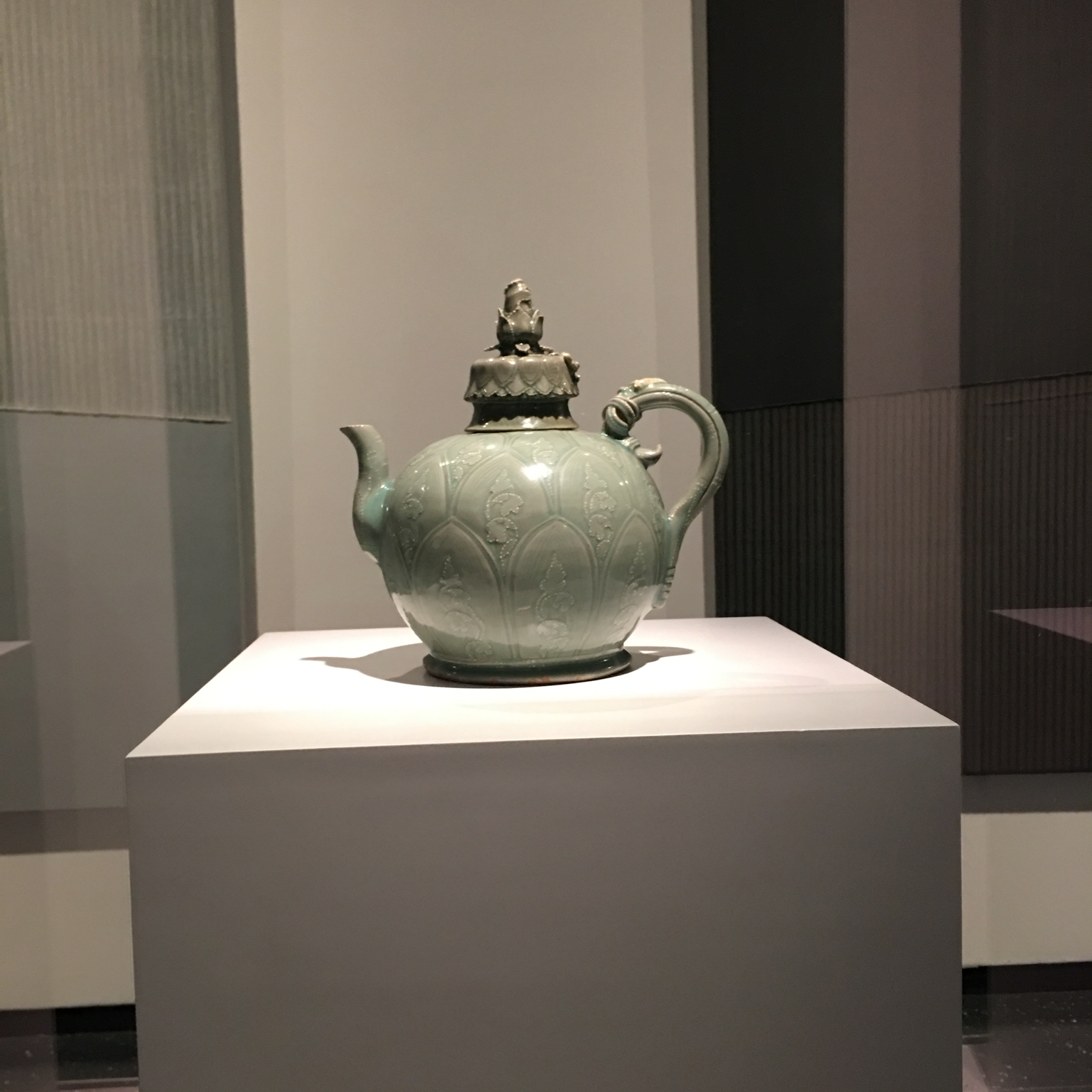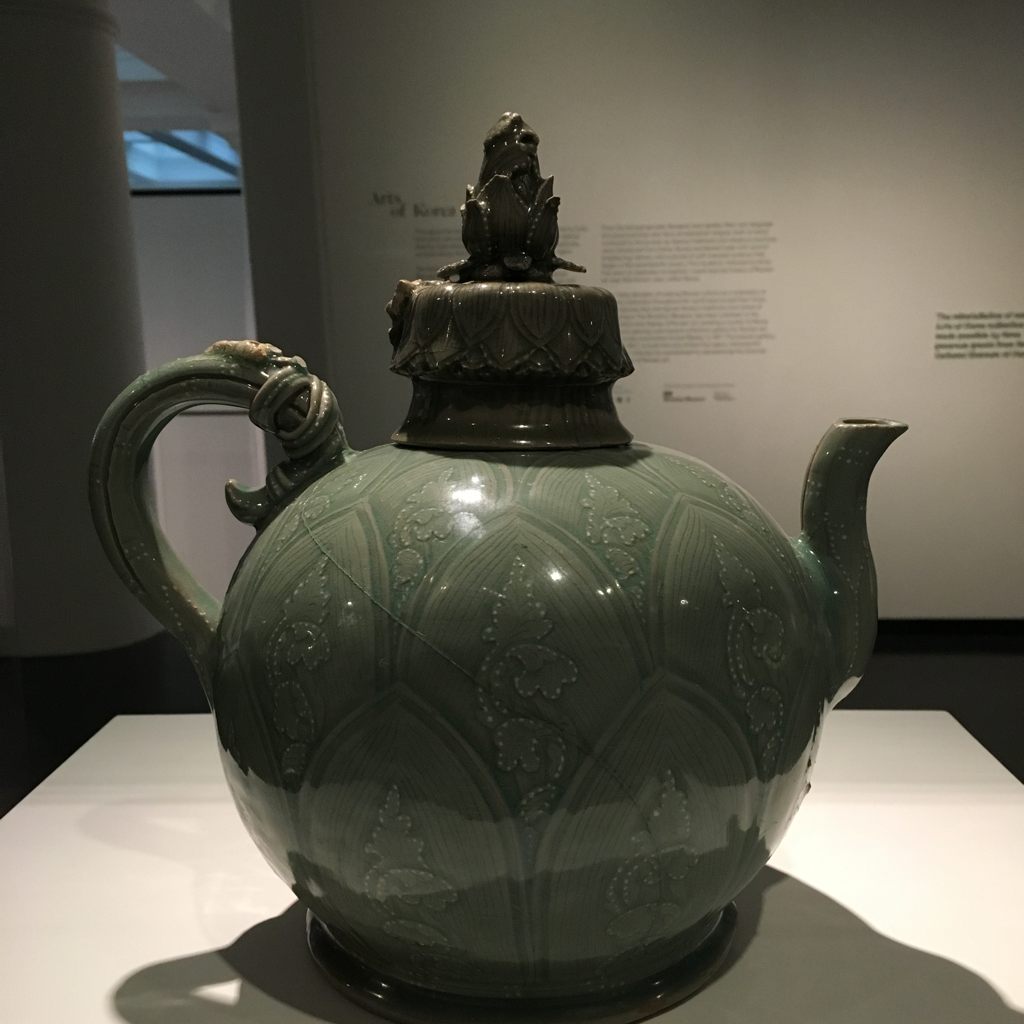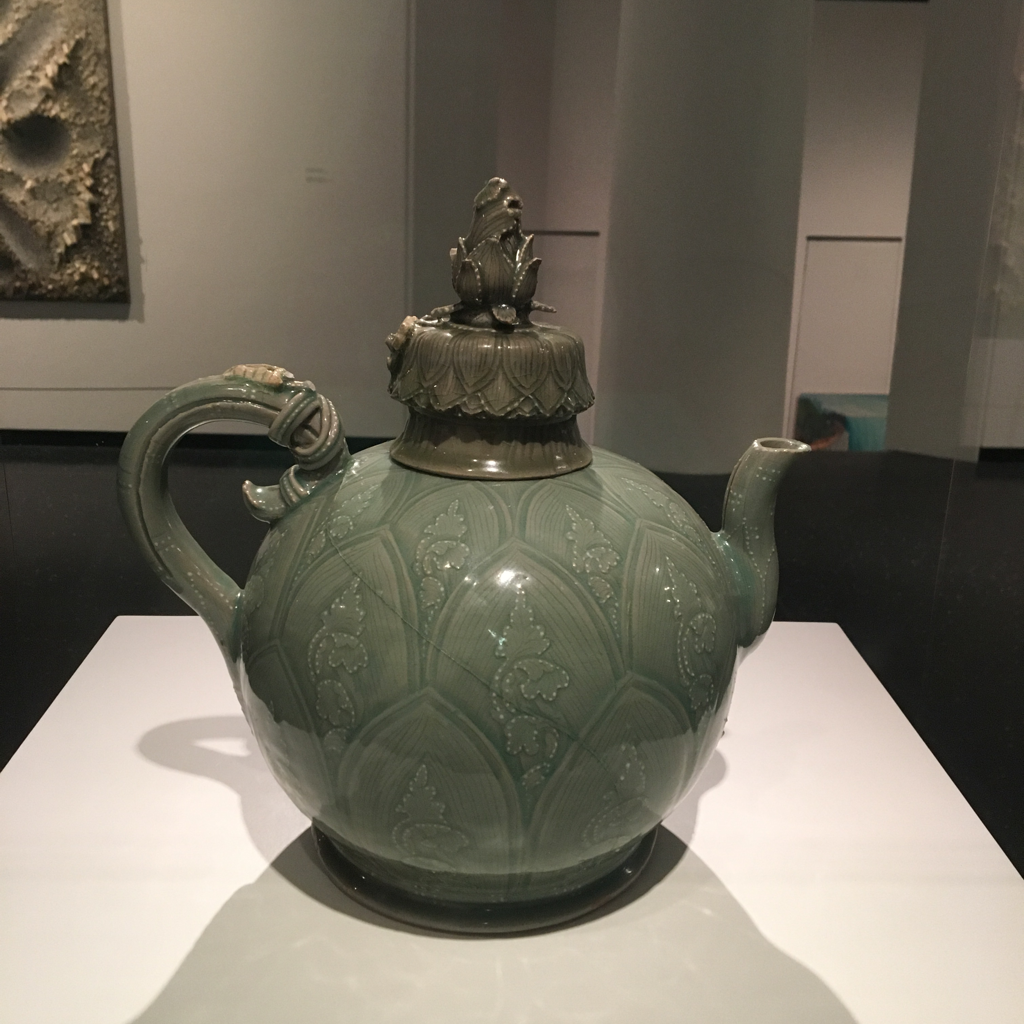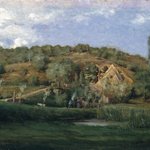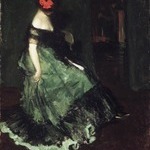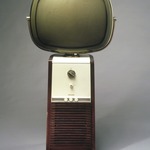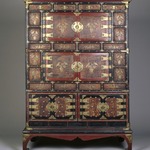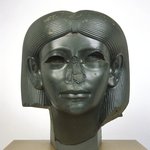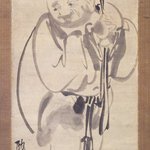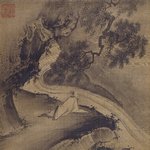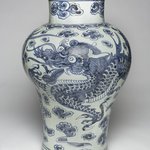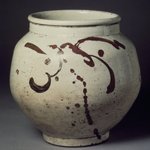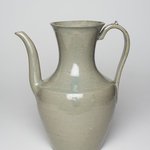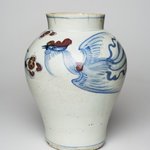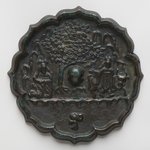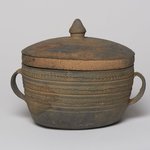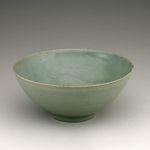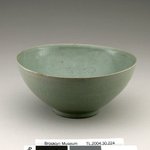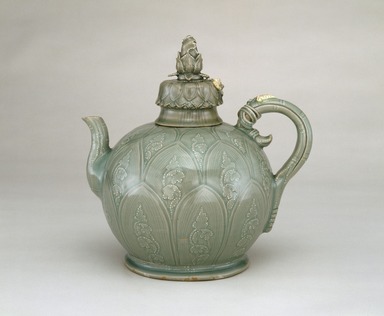

Ewer with Cover, first half 12th century. Stoneware with underglaze slip decoration and celadon glaze, 9 7/8 x 9 1/2 x 5 1/2 in. (25.1 x 24.1 x 14 cm). Brooklyn Museum, Gift of Mrs. Darwin R. James III, 56.138.1a-b. Creative Commons-BY (Photo: Brooklyn Museum, 56.138.1a-b_SL3_edited.jpg)

Ewer with Cover, first half 12th century. Stoneware with underglaze slip decoration and celadon glaze, 9 7/8 x 9 1/2 x 5 1/2 in. (25.1 x 24.1 x 14 cm). Brooklyn Museum, Gift of Mrs. Darwin R. James III, 56.138.1a-b. Creative Commons-BY (Photo: Brooklyn Museum (in collaboration with National Research Institute of Cultural Heritage, Daejon, Korea), CUR.56.138.1a-b_side_view6_Heon-Kang_photo_NRICH.jpg)

Ewer with Cover, first half 12th century. Stoneware with underglaze slip decoration and celadon glaze, 9 7/8 x 9 1/2 x 5 1/2 in. (25.1 x 24.1 x 14 cm). Brooklyn Museum, Gift of Mrs. Darwin R. James III, 56.138.1a-b. Creative Commons-BY (Photo: Brooklyn Museum (in collaboration with National Research Institute of Cultural Heritage, Daejon, Korea), CUR.56.138.1a-b_side_view5_Heon-Kang_photo_NRICH.jpg)
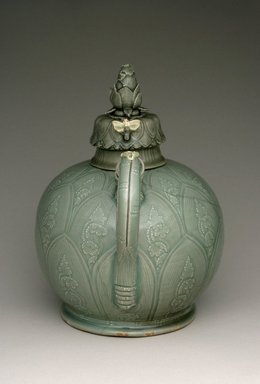
Ewer with Cover, first half 12th century. Stoneware with underglaze slip decoration and celadon glaze, 9 7/8 x 9 1/2 x 5 1/2 in. (25.1 x 24.1 x 14 cm). Brooklyn Museum, Gift of Mrs. Darwin R. James III, 56.138.1a-b. Creative Commons-BY (Photo: Brooklyn Museum (in collaboration with National Research Institute of Cultural Heritage, Daejon, Korea), CUR.56.138.1a-b_back_Heon-Kang_photo_NRICH.jpg)

Ewer with Cover, first half 12th century. Stoneware with underglaze slip decoration and celadon glaze, 9 7/8 x 9 1/2 x 5 1/2 in. (25.1 x 24.1 x 14 cm). Brooklyn Museum, Gift of Mrs. Darwin R. James III, 56.138.1a-b. Creative Commons-BY (Photo: Brooklyn Museum (in collaboration with National Research Institute of Cultural Heritage, Daejon, Korea), CUR.56.138.1a-b_lid_view1_Heon-Kang_photo_NRICH.jpg)

Ewer with Cover, first half 12th century. Stoneware with underglaze slip decoration and celadon glaze, 9 7/8 x 9 1/2 x 5 1/2 in. (25.1 x 24.1 x 14 cm). Brooklyn Museum, Gift of Mrs. Darwin R. James III, 56.138.1a-b. Creative Commons-BY (Photo: Brooklyn Museum (in collaboration with National Research Institute of Cultural Heritage, Daejon, Korea), CUR.56.138.1a-b_detail1_Heon-Kang_photo_NRICH.jpg)

Ewer with Cover, first half 12th century. Stoneware with underglaze slip decoration and celadon glaze, 9 7/8 x 9 1/2 x 5 1/2 in. (25.1 x 24.1 x 14 cm). Brooklyn Museum, Gift of Mrs. Darwin R. James III, 56.138.1a-b. Creative Commons-BY (Photo: Brooklyn Museum (in collaboration with National Research Institute of Cultural Heritage, Daejon, Korea), CUR.56.138.1a-b_detail6_Heon-Kang_photo_NRICH.jpg)

Ewer with Cover, first half 12th century. Stoneware with underglaze slip decoration and celadon glaze, 9 7/8 x 9 1/2 x 5 1/2 in. (25.1 x 24.1 x 14 cm). Brooklyn Museum, Gift of Mrs. Darwin R. James III, 56.138.1a-b. Creative Commons-BY (Photo: Brooklyn Museum (in collaboration with National Research Institute of Cultural Heritage, Daejon, Korea), CUR.56.138.1a-b_detail7_Heon-Kang_photo_NRICH.jpg)

Ewer with Cover, first half 12th century. Stoneware with underglaze slip decoration and celadon glaze, 9 7/8 x 9 1/2 x 5 1/2 in. (25.1 x 24.1 x 14 cm). Brooklyn Museum, Gift of Mrs. Darwin R. James III, 56.138.1a-b. Creative Commons-BY (Photo: Brooklyn Museum (in collaboration with National Research Institute of Cultural Heritage, Daejon, Korea), CUR.56.138.1a-b_base_Heon-Kang_photo_NRICH.jpg)

Ewer with Cover, first half 12th century. Stoneware with underglaze slip decoration and celadon glaze, 9 7/8 x 9 1/2 x 5 1/2 in. (25.1 x 24.1 x 14 cm). Brooklyn Museum, Gift of Mrs. Darwin R. James III, 56.138.1a-b. Creative Commons-BY (Photo: Brooklyn Museum (in collaboration with National Research Institute of Cultural Heritage, Daejon, Korea), CUR.56.138.1a-b_top_Heon-Kang_photo_NRICH.jpg)
Ewer with Cover
Asian Art
On View: Asian Galleries, South, 2nd floor







